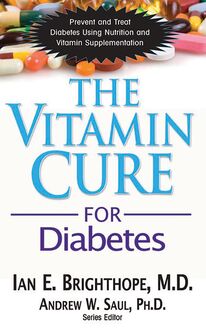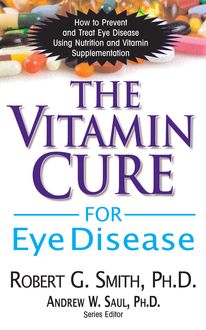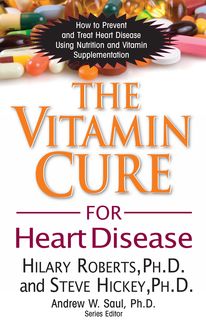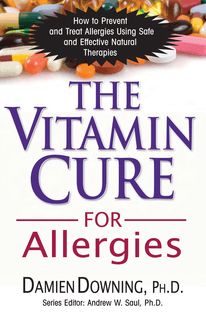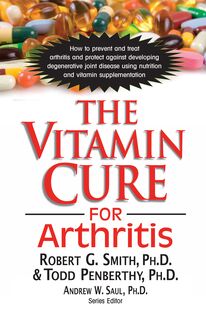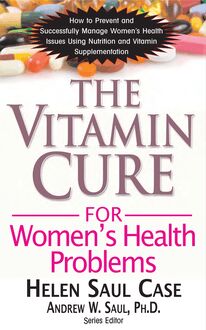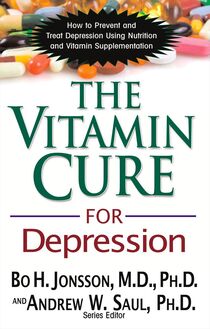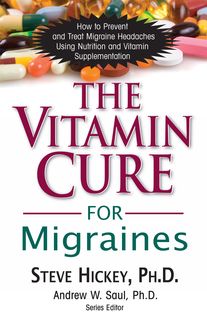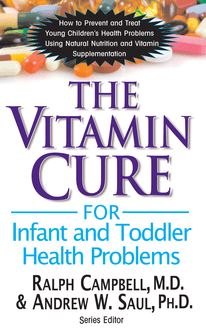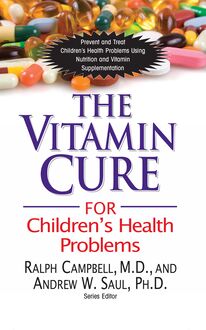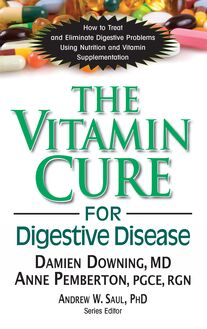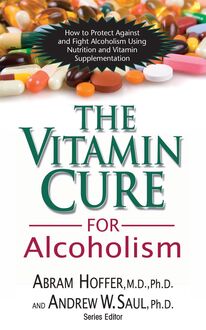The Vitamin Cure for Diabetes , livre ebook
120
pages
English
Ebooks
2012
Vous pourrez modifier la taille du texte de cet ouvrage
Obtenez un accès à la bibliothèque pour le consulter en ligne En savoir plus
Découvre YouScribe en t'inscrivant gratuitement
Découvre YouScribe en t'inscrivant gratuitement
120
pages
English
Ebooks
2012
Vous pourrez modifier la taille du texte de cet ouvrage
Obtenez un accès à la bibliothèque pour le consulter en ligne En savoir plus
Publié par
Date de parution
15 janvier 2012
Nombre de lectures
0
EAN13
9781591203360
Langue
English
Publié par
Date de parution
15 janvier 2012
Nombre de lectures
0
EAN13
9781591203360
Langue
English
THE VITAMIN CURE
for Diabetes
I AN E. B RIGHTHOPE , M.D .
A NDREW W. S AUL , P H .D., SERIES EDITOR
The information contained in this book is based upon the research and personal and professional experiences of the authors. It is not intended as a substitute for consulting with your physician or other healthcare provider. Any attempt to diagnose and treat an illness should be done under the direction of a healthcare professional.
The publisher does not advocate the use of any particular healthcare protocol but believes the information in this book should be available to the public. The publisher and authors are not responsible for any adverse effects or consequences resulting from the use of the suggestions, preparations, or procedures discussed in this book. Should the reader have any questions concerning the appropriateness of any procedures or preparation mentioned, the authors and the publisher strongly suggest consulting a professional healthcare advisor.
Basic Health Publications, Inc.
28812 Top of the World Drive
Laguna Beach, CA 92651
949-715-7327 • www.basichealthpub.com
Library of Congress Cataloging-in-Publication Data is on file with the Library of Congress
ISBN-13: 978-1-59120-290-5
Copyright © 2012 by Ian E. Brighthope, M.D.
All rights reserved. No part of this publication may be reproduced, stored in a retrieval system, or transmitted, in any form or by any means, electronic, mechanical, photocopying, recording, or otherwise, without the prior written consent of the copyright owner.
Editing: Margaret Moran and Andrew W. Saul
Typesetting/Book design: Gary A. Rosenberg
Cover design: Mike Stromberg
Printed in the United States of America
10 9 8 7 6 5 4 3 2 1
C ONTENTS
Acknowledgments
Foreword by Damien Downing, M.D.
Introduction
PART ONE Understanding Diabetes
CHAPTER 1 What Is Diabetes?
CHAPTER 2 What Causes Diabetes?
CHAPTER 3 Diabetes Diagnosis and Treatment
PART TWO Nutritional Solutions
CHAPTER 4 Vitamin C: The Miracle Worker
CHAPTER 5 The B-Complex Vitamins
CHAPTER 6 Vitamin D
CHAPTER 7 Vitamin E Complex
CHAPTER 8 Minerals and Trace Elements
CHAPTER 9 Other Nutrients
CHAPTER 10 Herbal Medicines
CHAPTER 11 Supplements for Diabetics
AFTERWORD Why I Wrote this Book
Bibliography
Dedicated to My Mum, Moya
If we could give the right amount of nourishment and exercise, not too little and not too much, we would have found the safest way to health.
—H IPPOCRATES
A CKNOWLEDGEMENTS
I would like to thank the following people who supported me while writing this book or provided some of the many references: my PA, Susanne Powell; David Kirk; Charithra Attanayake; David Doolan; George Panagios; Senator Guy Barnett; Andrew W. Saul; Dr. Damien Downing; and all my staff. My special thanks to my wife Jill and our two adult children, Sarah-Jane and Daniel.
F OREWORD
Professor Ian Brighthope is a pioneer in nutritional and environmental medicine. He's also a strong-minded Aussie, which is just as well considering all the heat he has had to take over the years. It's no surprise that he studied agriculture before medicine—vets are way ahead of doctors in understanding the importance of nutrition, and farmers have known about it for millennia: finding the good pastures, the clean water for their animals. How did we manage to forget all that in relation to ourselves? I am thankful for doctors like Ian, who are able to see through the disinformation and ground us anew as humans who need good food and a safe planet to live on.
It is shameful that so many attacks have been made on Ian by the medical profession; he has had to become an expert in dealing with them. One reason that he (nearly always) succeeds is that he is (nearly always) right about medicine. Of course that's also a reason why he has been attacked; vested interests never want to hear the truth if it threatens profits or power.
Ian knows his stuff and he learns from his patients. This makes him an ideal person to explain to you about diabetes and how to deal with it. Some of the facts in this book are the old fundamentals that we managed somehow to forget. Many of the insights are right up-to-the-minute scientific news. Sometimes the two combine to complete the circle. Didn't your Granny go on about the importance of a good night's sleep, for instance? Scientists have finally caught up with her, and started to describe how lack of sleep disrupts your hormones, and can actually put weight on you. Obesity, the Metabolic Syndrome and diabetes are turning into the biggest killers around; but when you rethink and remodel your life and your diet, believe me, the benefits can be amazing.
When you turn over this page, one of the first things this book will tell you is that more than 220 million people worldwide have diabetes. If they all bought this book that would make the author a multi-millionaire! It won't happen, of course. But if you or someone you care about is one of that 220 million, you're holding in your hands a potentially life-saving opportunity to change that. One that doesn't depend on potentially dangerous drugs; one that tackles the fundamentals—the food we eat, the sunlight on our skin, the worries that keep us awake nights—and offers real solutions, based on lifestyle changes and safe, natural therapies.
This book doesn't lie to you. This isn't one of those internet “send $40 for our miracle cure" promos. Dr. Brighthope isn't suggesting you can just walk away from your doctor and do it all by yourself. Diabetes can be a killer. All the more reason to do everything you can, and not to rely on your prescriptions alone. You really can take back control of your own life and health; this book will tell you how.
Damien Downing, M.D. London, UK
I NTRODUCTION
W e have an epidemic of obesity and diabetes in Western industrialized nations. The industrial revolution has changed the world and our lives, forever. There have been many developments to our advantage such as the automobile, railroad, airplane, better homes and an abundance of food for many nations. Food processing is going to be our downfall unless we do something about it. The most sinister separation has been the removal of sugar from sugar cane and sugar beet. It would take a very long time chewing on sugar cane to extract a teaspoon of sugar, yet a machine can do it very effectively and provide literally buckets of sugar for each of us to consume every year. Nearly every processed food contains this potentially deadly poison. It's so easy to drink a can of soda—it's not so easy to accept that one can contains over ten teaspoons of sugar, most of which is stored in the body as fat.
I remember attending two international congresses on obesity in the 1980s at which not one speaker discussed the harmful effects of sugar. When I questioned the relationship of sugar to human diseases, a professor of nutrition and medicine replied that there was no medical evidence that sugar caused obesity, diabetes, or heart disease.
Those congresses were sponsored by the soft drink manufacturers, the ice-cream manufacturers, the sugar industry and the dietician's association whose journal was also sponsored by the sugar industry interests. Diabetes, sometimes called “the sugar disease,” is not always caused by sugar, but sugar plays a major role in most cases. As you will see, there are many other factors that contribute to diabetes. I hope you enjoy this book and if you are diabetic, that it assists you in your journey to better health. If you are not a diabetic, I hope that it gives you some direction in assisting a loved one with the disease. I took this journey with my mother after she was diagnosed with diabetes in 1968; a time when there was much less information than there is today.
The next time you enjoy a soft drink, ice cream, cake, or another sugary treat, please remember that these foods are converted to blood sugar that is deposited directly into fat cells if it is not used for energy. The sugar in your soft drink is called sucrose —commonly known as table sugar—and it consists of two simpler sugars: glucose, which becomes blood sugar, and fructose, also known as “fruit sugar” because it is the same sugar in fruits and honey. Just as the glucose that is not used for energy is stored as fat, fructose also goes directly into fat cells as triglycerides and fatty acids.
The shame and pity of all of this is that most people who enjoy these sugar-laden products do not realize that every mouthful they take is making them fat, little by little. I feel so sad when I see parents and children pouring this garbage down their throats—garbage that nutritionists still say is a part of a healthy diet. Yes, I am deliberately being provocative here, but that is because all the other reasonable strategies to change have failed.
In January 2011, the medical journal Circulation published an article that linked high added sugar intake to increased risk of heart and blood vessel disease in adolescents in the United States. At last, the published science is catching up with the nutritional and orthomolecular doctors who have been making scientifically based claims about the harmful effects of sugar for decades, including the fact that there is an increased risk of cardiovascular disease among adults who eat a high-carbohydrate, high-sugar diet. In the Circulation report, the average daily intake of added sugars was found to be about 22 percent of the total energy intake of an adolescent—a rather frightening figure that reflects over-consumption of calorie-dense, nutrient-poor foods. Further, the more sugar adolescents consumed, the lower their blood levels of the “good” (high-density lipoprotein, HDL) cholesterol that protects against heart disease. Basically, sugar is pushing out the molecules that protect against heart attacks. Added sugar also increased
